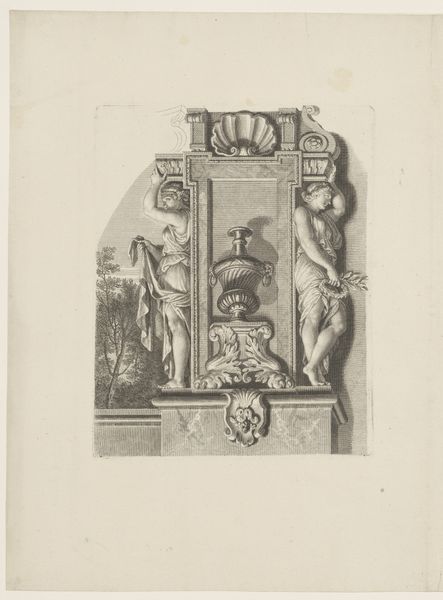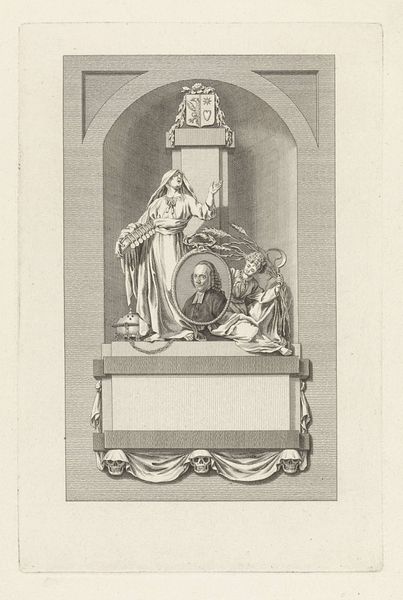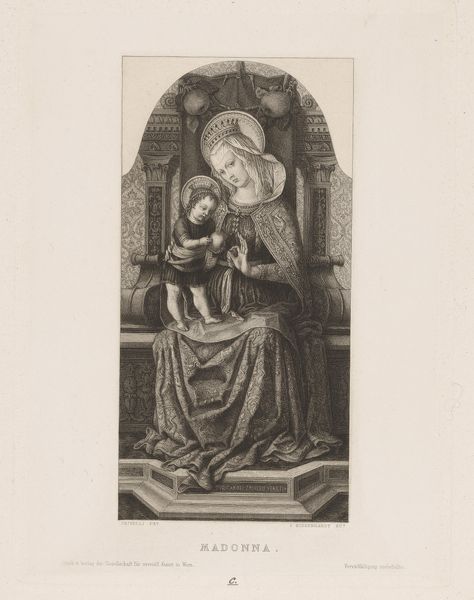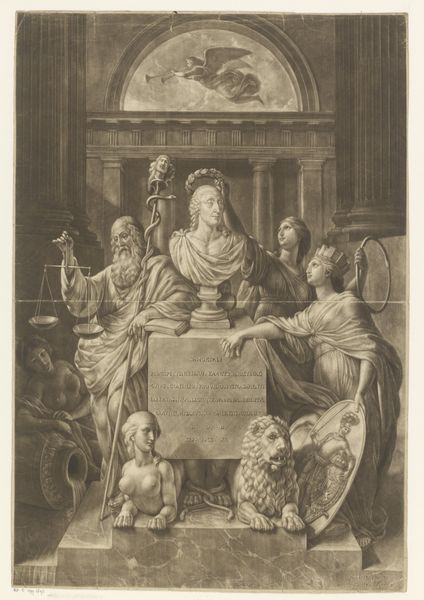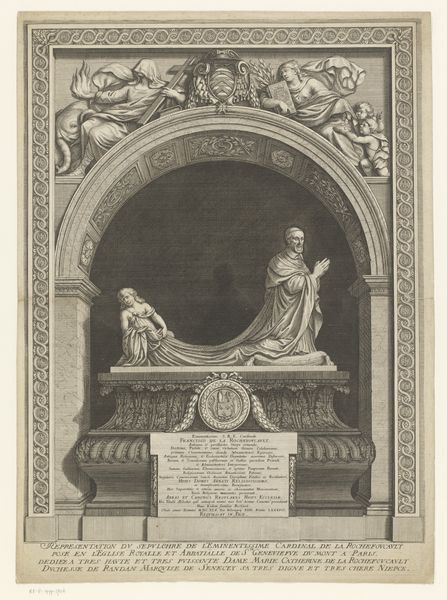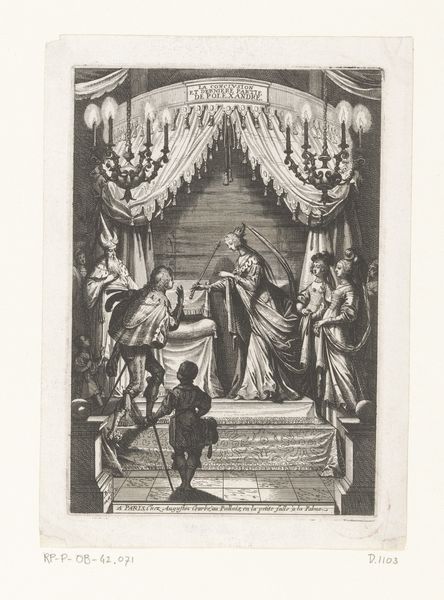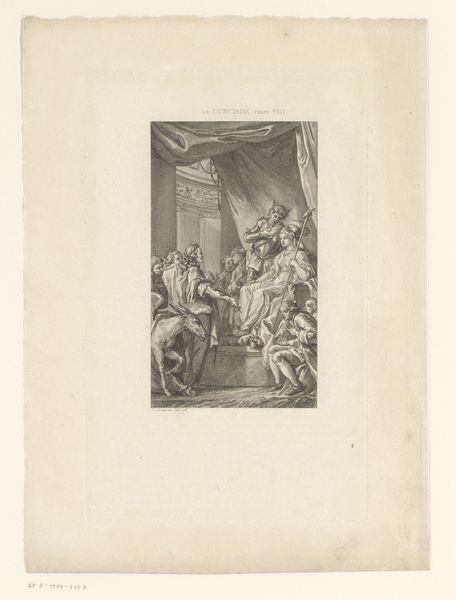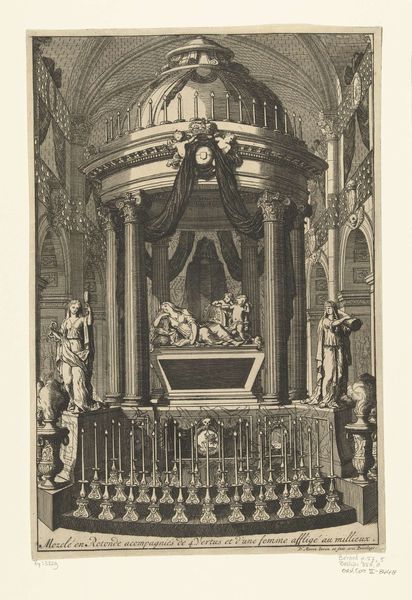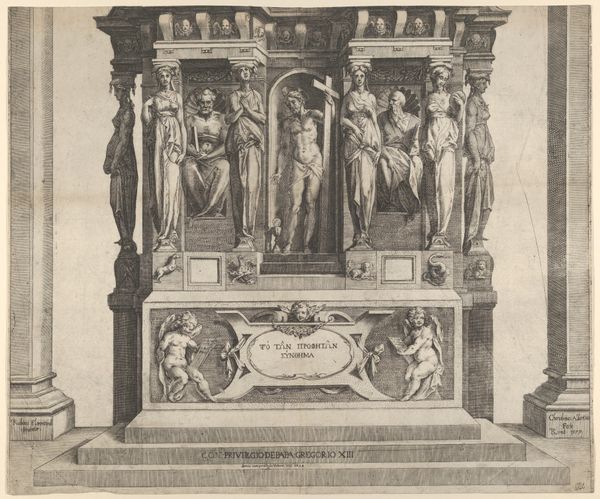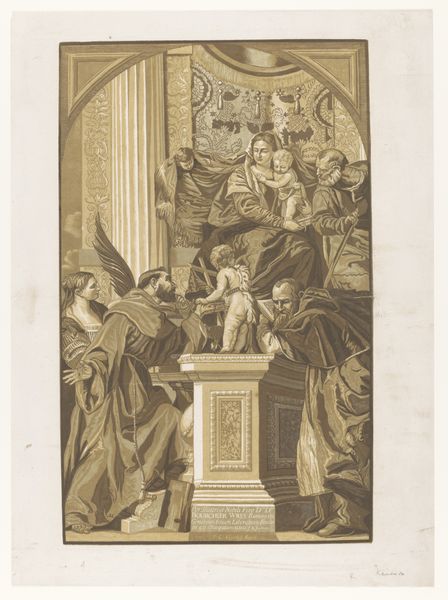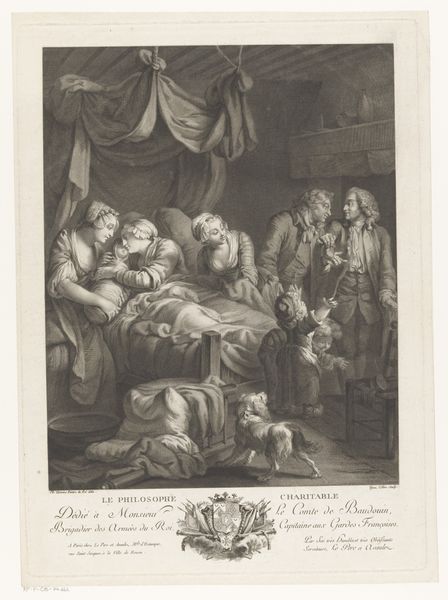
sculpture, engraving
neoclacissism
form
sculpture
line
history-painting
engraving
statue
Dimensions: height 624 mm, width 455 mm
Copyright: Rijks Museum: Open Domain
Curator: This is Heinrich Sintzenich’s engraving of the "Grave Monument for Alexander von der Mark," created in 1793, a prime example of Neoclassical sculpture reproduced through printmaking. Editor: It strikes me immediately as cold, yet grand. The gray scale gives it a timeless feel, like peering into a past sculpted in ice. Curator: Indeed. Sintzenich, known for his engravings that circulated designs and artworks, documents here a monument erected for a young nobleman. We can interpret its stark lines through the lens of Enlightenment ideals. Editor: And specifically, how do such historical moments influence its visual impact? For instance, the somberness reflects a broader preoccupation with mortality, doesn’t it? But considering that the person was of nobility, how does power and gender fit in to all of this? Curator: Certainly, the design draws on the classical past to evoke universal values like virtue and sacrifice, yet simultaneously reflects the hierarchical structures of its own time. It's worth noting the young man died in service. Editor: Right. We've got classical figures at the top, like Muses mourning, right? They create a powerful commentary on how societies deal with loss and how artistic interpretation, from its inception, has served the interest of political agenda setting. Curator: Precisely. Notice the sculpted frieze along the base. It likely illustrates virtuous deeds or scenes from his life. Editor: What gets to me is the seemingly effortless control the image commands – a result of the visual language, but ultimately reinforced in order to sustain an already skewed power structure. This kind of image is meant to cement that lineage in the face of history. Curator: Perhaps it aimed to immortalize him, framing his existence through symbolic figures and textual inscriptions. These, in turn, served to consolidate authority within the court and academia during the late 18th century. Editor: Thanks to the print medium, we are provided insight into these societal agendas during a very specific time period, offering us access to complex nuances behind seemingly straightforward commemorative images. Curator: It brings to life so many societal factors at play that give additional, political meanings to Sintzenich's memorial composition.
Comments
No comments
Be the first to comment and join the conversation on the ultimate creative platform.

